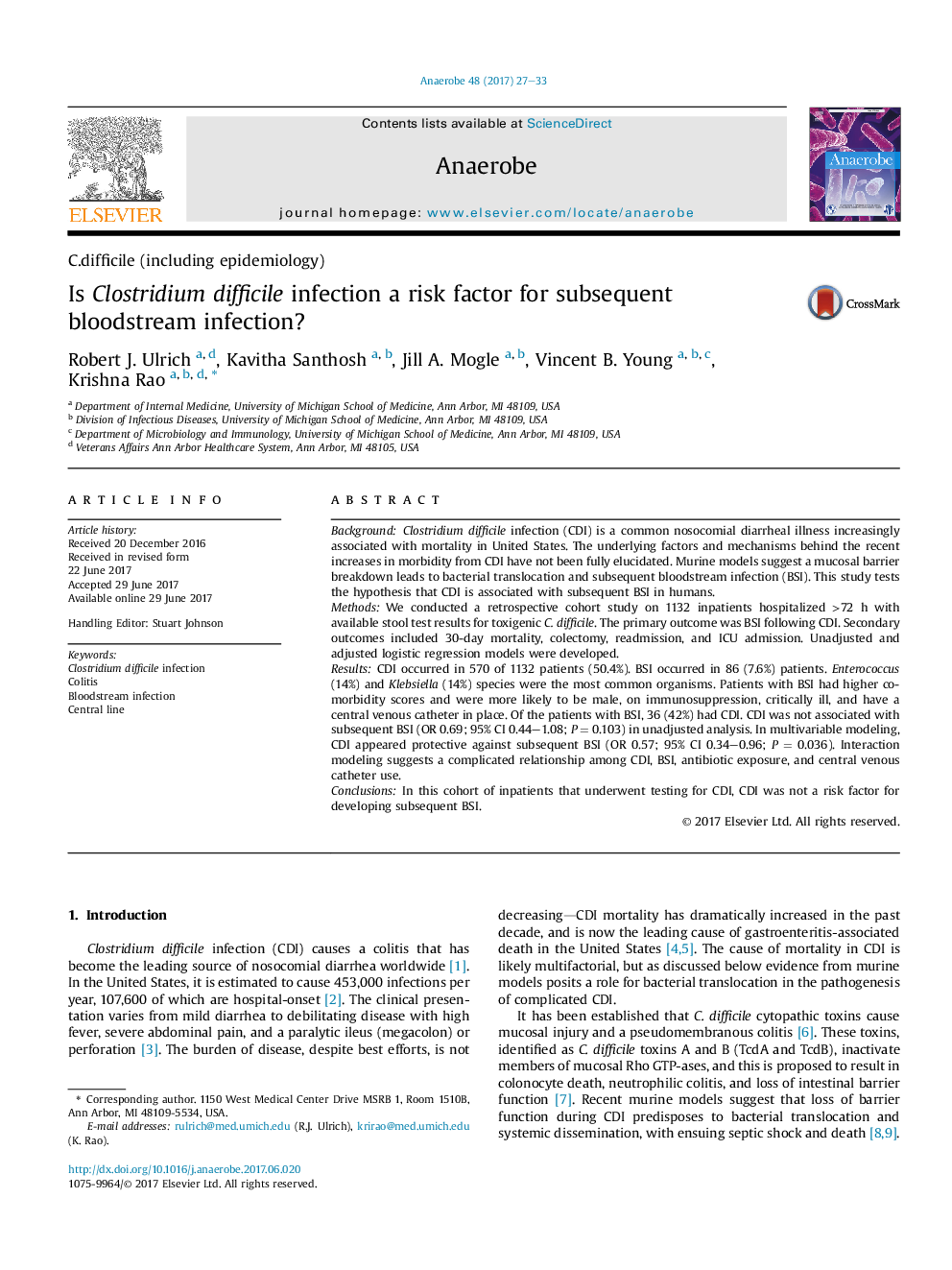| کد مقاله | کد نشریه | سال انتشار | مقاله انگلیسی | نسخه تمام متن |
|---|---|---|---|---|
| 5671347 | 1592816 | 2017 | 7 صفحه PDF | دانلود رایگان |

- C. difficile infection is not a risk factor for subsequent bloodstream infection.
- Bloodstream infections were most often from Klebsiella and Enterococcus species.
- Central venous catheter presence was a major risk factor for bloodstream infection.
BackgroundClostridium difficile infection (CDI) is a common nosocomial diarrheal illness increasingly associated with mortality in United States. The underlying factors and mechanisms behind the recent increases in morbidity from CDI have not been fully elucidated. Murine models suggest a mucosal barrier breakdown leads to bacterial translocation and subsequent bloodstream infection (BSI). This study tests the hypothesis that CDI is associated with subsequent BSI in humans.MethodsWe conducted a retrospective cohort study on 1132 inpatients hospitalized >72 h with available stool test results for toxigenic C. difficile. The primary outcome was BSI following CDI. Secondary outcomes included 30-day mortality, colectomy, readmission, and ICU admission. Unadjusted and adjusted logistic regression models were developed.ResultsCDI occurred in 570 of 1132 patients (50.4%). BSI occurred in 86 (7.6%) patients. Enterococcus (14%) and Klebsiella (14%) species were the most common organisms. Patients with BSI had higher comorbidity scores and were more likely to be male, on immunosuppression, critically ill, and have a central venous catheter in place. Of the patients with BSI, 36 (42%) had CDI. CDI was not associated with subsequent BSI (OR 0.69; 95% CI 0.44-1.08; P = 0.103) in unadjusted analysis. In multivariable modeling, CDI appeared protective against subsequent BSI (OR 0.57; 95% CI 0.34-0.96; P = 0.036). Interaction modeling suggests a complicated relationship among CDI, BSI, antibiotic exposure, and central venous catheter use.ConclusionsIn this cohort of inpatients that underwent testing for CDI, CDI was not a risk factor for developing subsequent BSI.
Journal: Anaerobe - Volume 48, December 2017, Pages 27-33